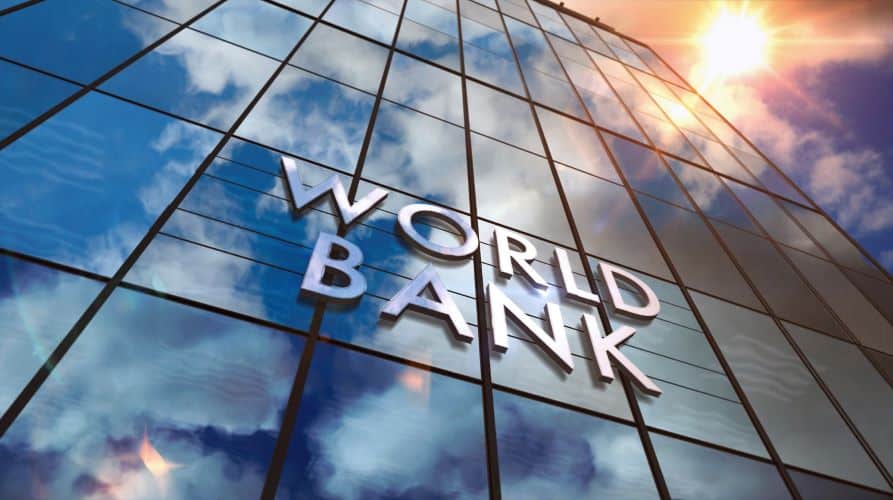India’s Economic Potential: Insights from the World Bank

The World Bank’s chief economist, Indermit Gill, recently shared his insights on India’s economic landscape. He highlighted the country’s potential for growth, emphasizing the importance of strategic reforms. With a favorable demographic profile, a large domestic market, and manageable private sector debt, India stands at a crucial juncture. Gill believes that India can elevate its growth rate from 6% to 8% by enhancing efficiency, promoting economic freedom, and investing in quality education. This article delves into the challenges facing the global economy, the unique position of middle-income countries like India, and the strategies that can help India realize its economic potential.
Challenges in the Global Economy
The global economy is currently facing a myriad of challenges. These challenges vary significantly across different income groups. Advanced economies, particularly in the Euro Area, have managed to reduce inflation but are now grappling with sluggish growth. This situation is often referred to as “secular stagnation,” characterized by adverse demographics and declining productivity. In contrast, middle-income countries, including India, are experiencing a phenomenon known as the “middle-income trap.” This trap is marked by stagnant growth rates that hinder rapid convergence to the living standards of advanced economies.
Low-income countries, primarily in Africa and war-torn regions like Afghanistan and Syria, have seen little improvement since the mid-2010s. Their GDP growth has barely kept pace with population growth, resulting in stagnant or declining income levels for their citizens. The global economy is settling into a lower growth trajectory, with middle-income countries witnessing a sharp decline in GDP growth rates. For instance, the average growth rate for these countries dropped from 6% in the 2000s to a projected 4% in the 2020s. This trend underscores the urgent need for effective policies to stimulate growth and development in these regions.
Strategies for Middle-Income Economies
To reverse the dismal growth trends, middle-income economies must adopt a multifaceted approach. The latest World Development Report from the World Bank outlines key strategies based on successful case studies from countries like South Korea, Poland, and Chile. These nations have thrived by fostering private investment, maintaining low inflation, and facilitating the infusion of new technologies. They have also demonstrated patience and discipline in transitioning to innovation-led development.
India, along with countries like Vietnam, is beginning to implement similar strategies. However, these nations face significant external challenges, including rising protectionism in advanced economies and increasing concerns about climate change. Domestically, issues such as high debt levels and aging populations further complicate the economic landscape. To overcome these hurdles, middle-income countries must focus on creating an environment conducive to investment, innovation, and sustainable growth.
India’s Unique Advantages
India possesses several advantages that set it apart from other middle-income countries. The country is poised to benefit from a favorable demographic profile over the next two decades. This demographic dividend presents a unique opportunity for economic growth. Additionally, India is becoming an attractive destination for foreign investors seeking to diversify away from China. With a large and rapidly growing market, India is likely to see increased foreign direct investment (FDI) in the coming years.
Moreover, India’s private sector is relatively less indebted compared to its counterparts in other countries. This financial stability allows for greater flexibility in investment and growth. The country’s economic structure is also more balanced, with a normal consumption-to-GDP ratio. This balance reduces reliance on foreign consumption, making India’s growth less threatening compared to China’s rapid expansion in previous decades. Gill emphasizes that India is at a critical juncture and must seize this golden opportunity for growth.
The Path Forward: Education and Investment
To realize its economic potential, India must focus on several key areas, particularly education and investment. Gill estimates that India’s potential growth rate could be pushed from 6% to 8% with the right reforms. This requires improving efficiency in capital, labor, and energy usage. Structural reforms are essential, including enhancing openness to foreign investment and trade, better utilizing the talents of women and marginalized groups, and reforming state-owned enterprises.
Investment in human capital is equally crucial. India needs to significantly increase its investment in education, particularly in secondary schooling and higher education. The challenge lies not in a lack of funds but in the political will to reform public education systems. The urgency for change is palpable, especially as India aims to achieve its goal of becoming a developed nation by 2047.
India’s economic future holds immense promise. By addressing the challenges it faces and leveraging its unique advantages, India can navigate the complexities of the global economy and achieve sustainable growth. The next two decades present a critical window of opportunity that must be seized with urgency and strategic foresight.
Observer Voice is the one stop site for National, International news, Sports, Editor’s Choice, Art/culture contents, Quotes and much more. We also cover historical contents. Historical contents includes World History, Indian History, and what happened today. The website also covers Entertainment across the India and World.

